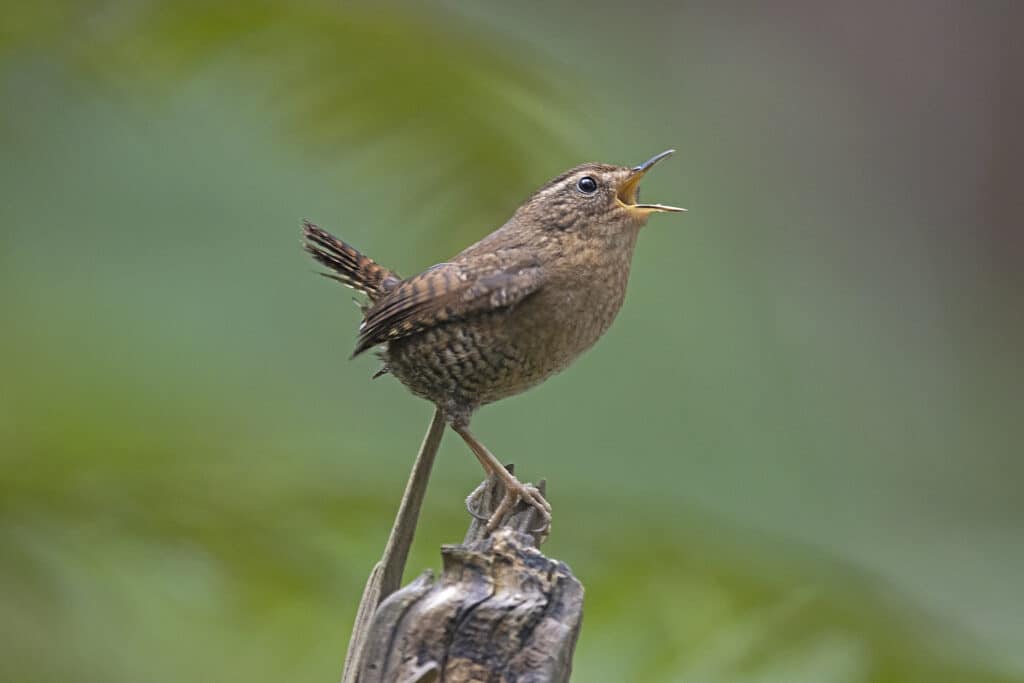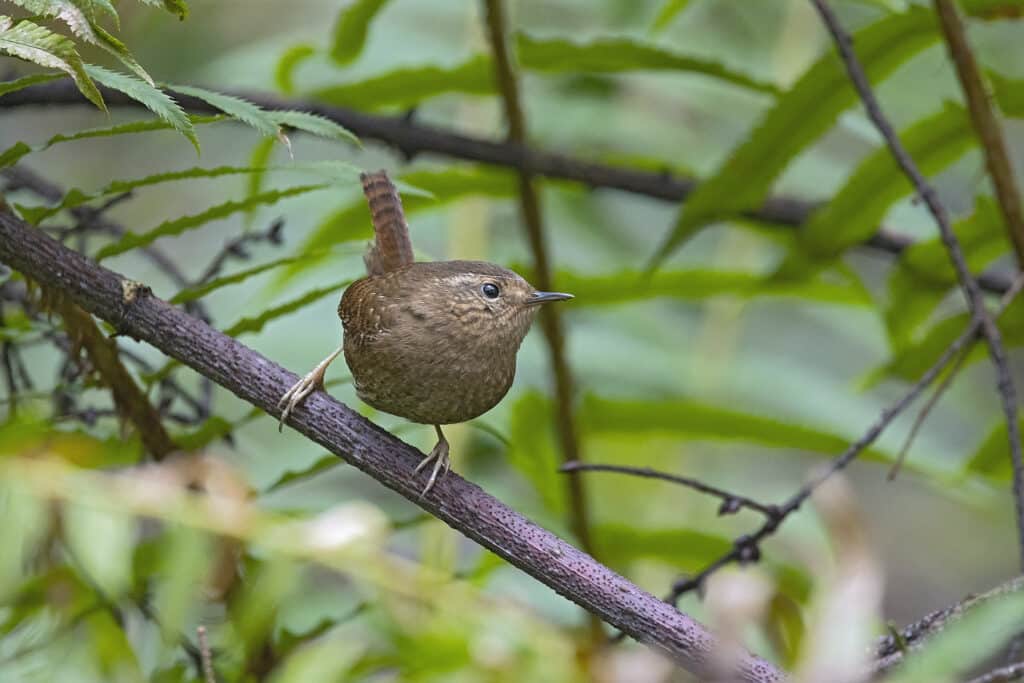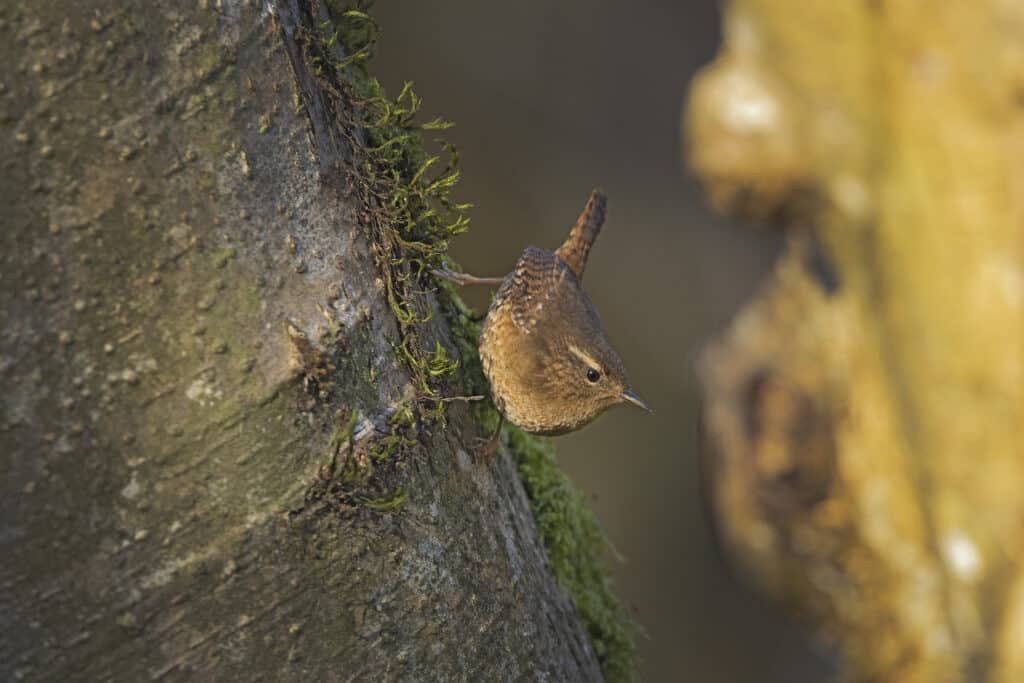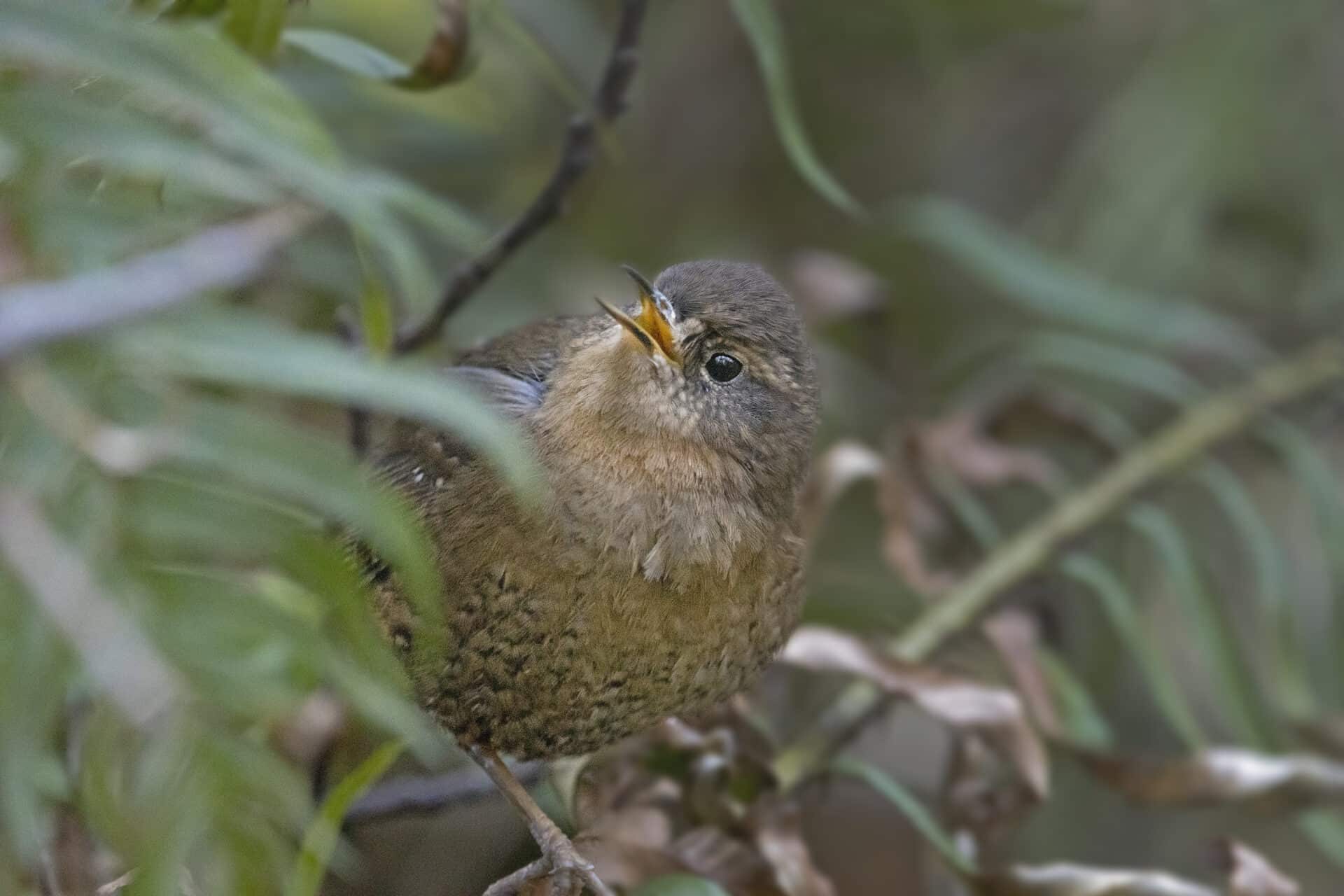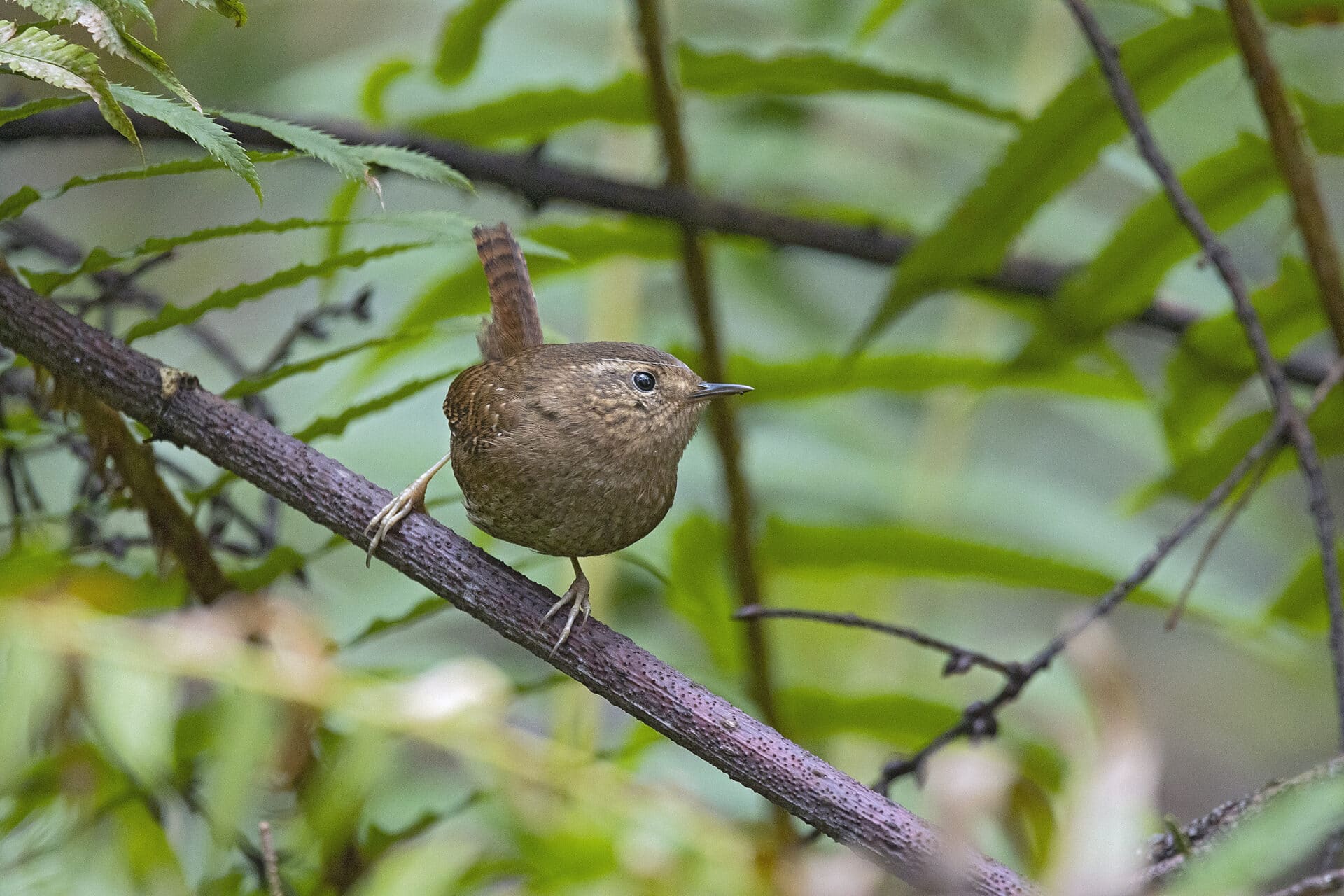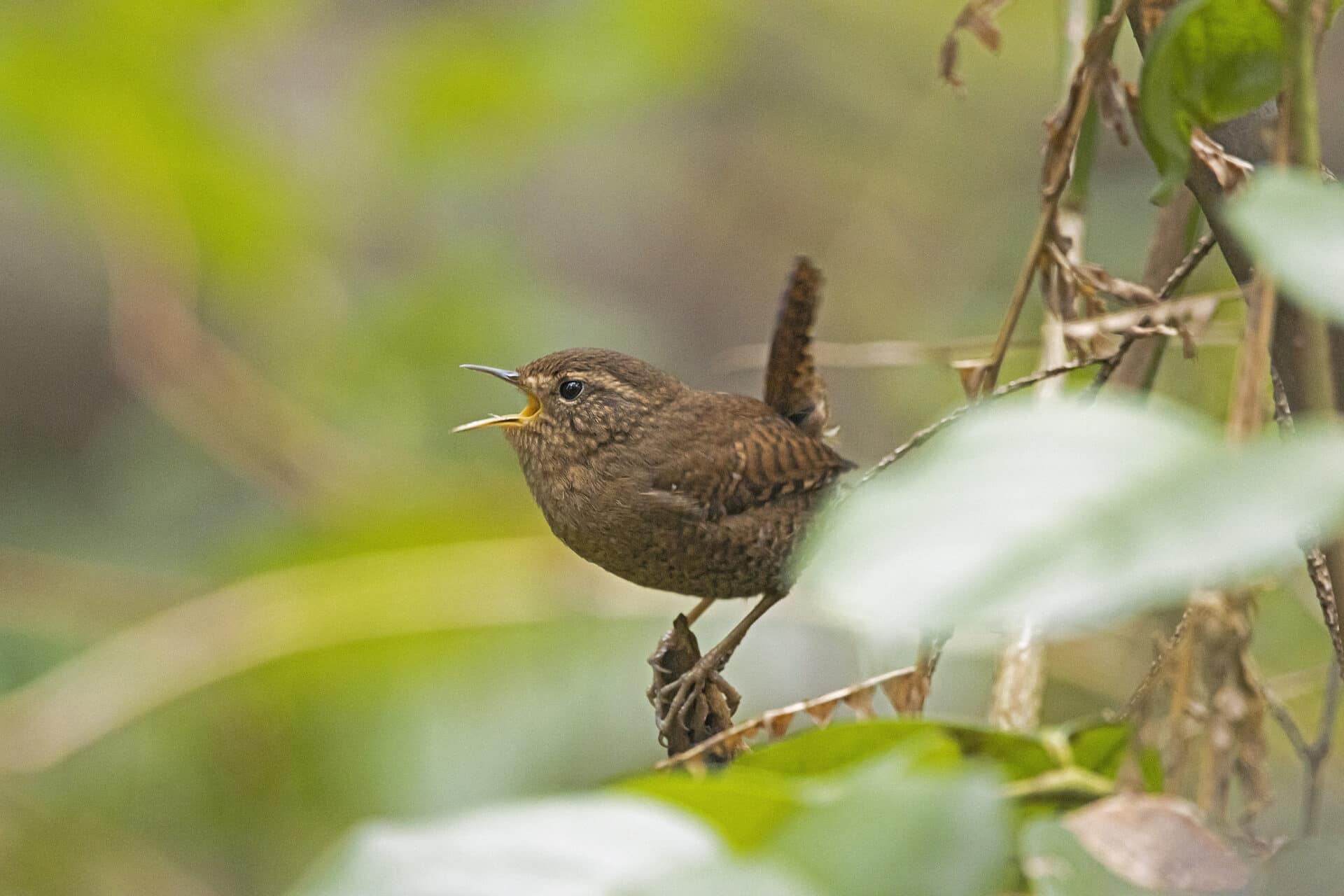The Pacific Wren has somehow managed to be one of the loudest birds in the woods as well as one of the more elusive birds. Often, I hear the birds all around me, but due to their small size and mouse-like movements, they are gone almost as quickly as I can spot them.
This bird is one of the more challenging subjects I’ve chosen. Finding one that will sit still long enough was not easy. I also had to find the right balance between enough light and a fast enough shutter speed, without getting too much noise in the photo.
Quick Facts:
Latin Name: Troglodytes pacificus
Size: 8 – 12cm
Lifespan: 3 – 5 years
Where to Find A Pacific Wren
Pacific Wrens have a range that covers most of British Columbia and parts of the west coast of the United States. They prefer coniferous forests with dense shrubs and cover to scurry around in.
Birders will have the best luck looking in wetter environments and older photos with lots of debris on the forest floor.
While Pacific Wrens can be found year-round in British Columbia, there seems to be a higher concentration starting around April and lasting through July, with a dip in the fall before numbers pick back up in November.
Diet of A Pacific Wren
Pacific Wrens primarily eat what most little birds like to eat: bugs! Beetles, caterpillars, flies, and spiders are all on the menu for this bird. From time to time, they may also eat berries.
Fun Facts
- Used to be classified with the Winter Wren, but has since been separated into two species
- Males will build decoy, or “cock” nests
- The male’s songs are a tool for defending their territory as well as attracting a mate
- Sometimes takes the nest of the larger Bewicks Wren
